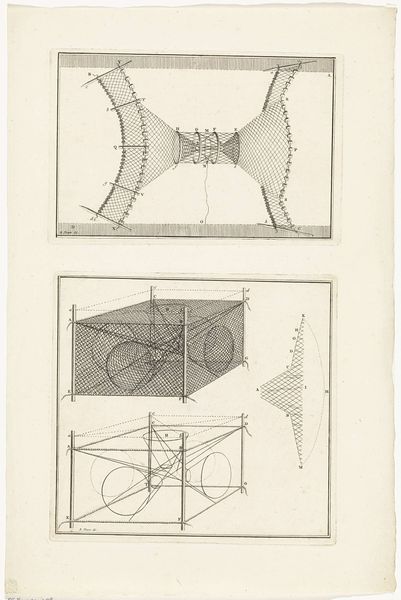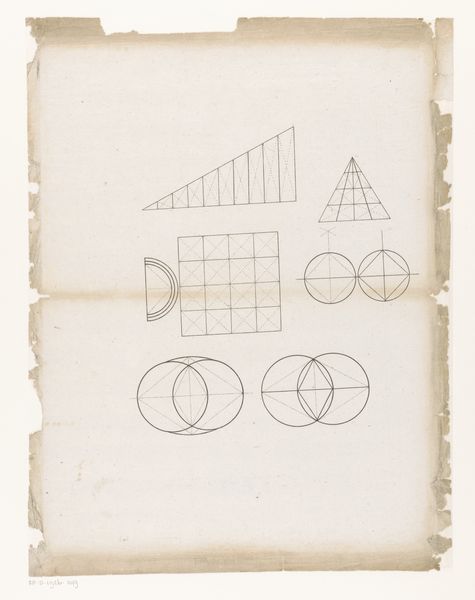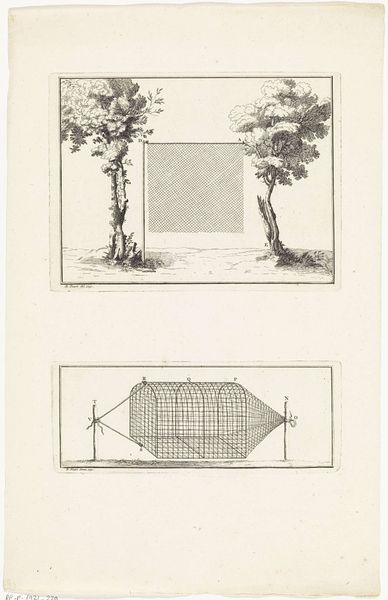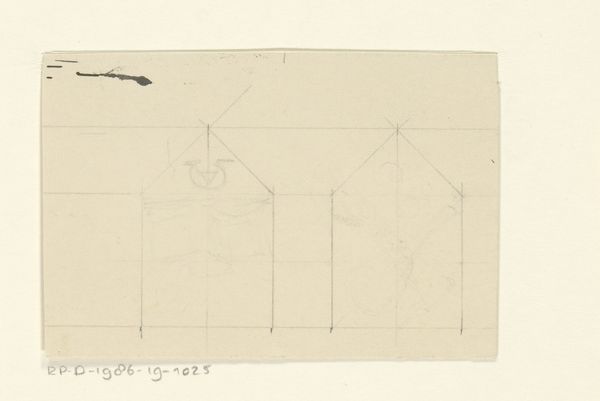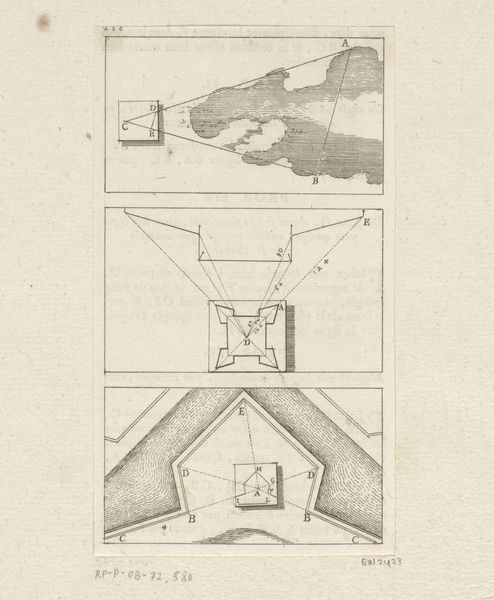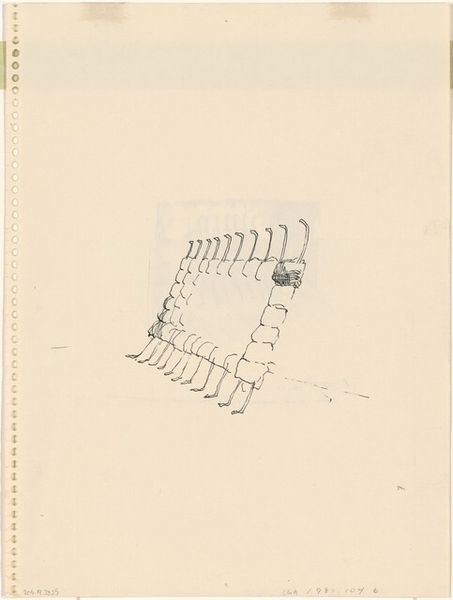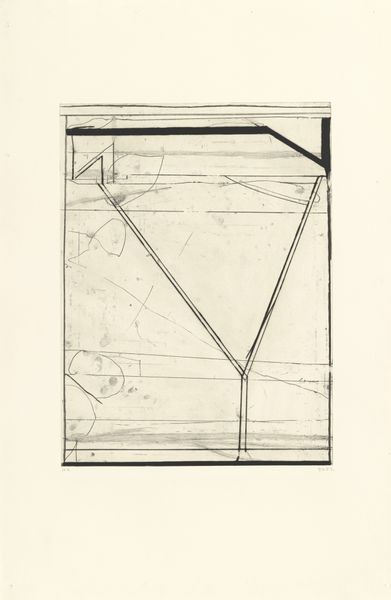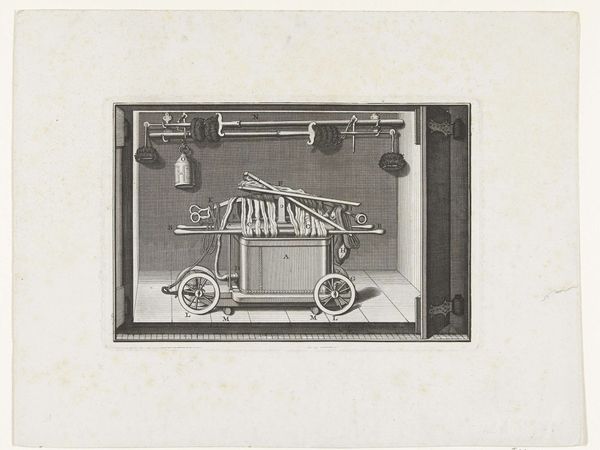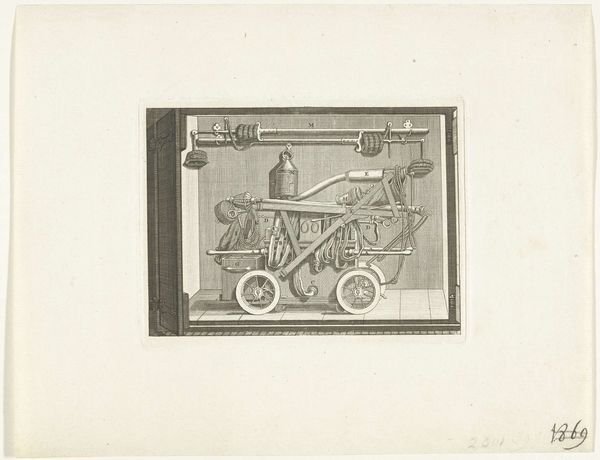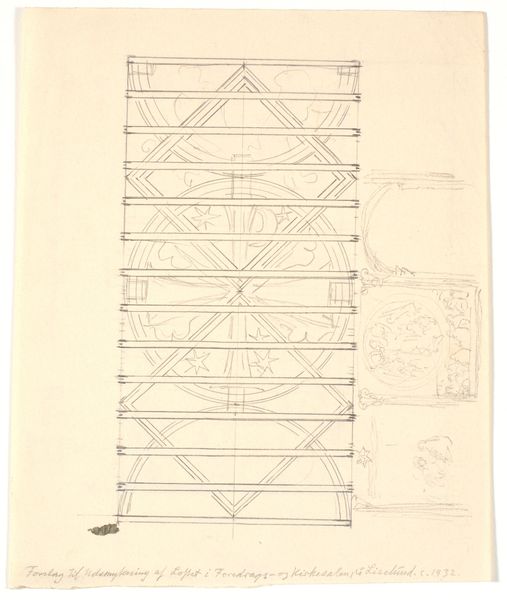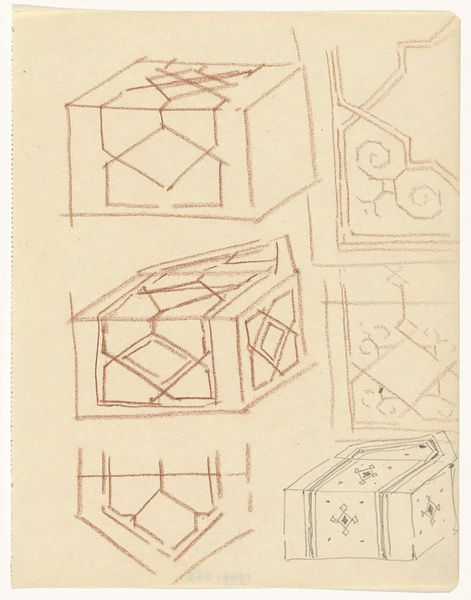
print, etching
#
baroque
# print
#
etching
#
landscape
#
etching
#
geometric
#
line
Dimensions: height 113 mm, width 160 mm, height 74 mm, width 94 mm, height 378 mm, width 246 mm
Copyright: Rijks Museum: Open Domain
Curator: Standing before us is "Net met fuiken en prikbord," an etching crafted by Bernard Picart in 1731, currently held at the Rijksmuseum. At first glance, the density of lines forming geometric patterns suggests technical drawings, blueprints of sorts. Editor: Blueprints? I'm seeing a starkness, a world rendered in the severe language of angles and gridded texture. It has a chilling, scientific precision, far from Baroque exuberance. Curator: Indeed, although the piece is classified as Baroque, that period witnessed burgeoning developments in science and exploration. This work might depict the design for fishing traps—a blend of practical knowledge and artistry intended for hunting. Consider, also, the way exploitation and industrialization of labor took root during that period: does this print perhaps subtly hint at modes of capture that existed at the time? Editor: Now that you mention "capture," notice the lines. The entire composition hinges on that precise linework: stark, almost unforgiving. I see not mere representation, but a semiotic game; a code suggesting the architecture of subjugation. Each line has a purpose in corralling life itself. Curator: Furthermore, this work offers an intersectional perspective. It's not just about "how" to construct these items; the inclusion of what seems to be a display of an alphabet for the mute shows class bias with accessibility and knowledge being withheld from all but those deemed fit for education. The artist includes both the practical and socially-determined in his considerations. Editor: Yes, now I see. The display, with the crossing pattern is like prison bars – suggesting entrapment. Curator: Absolutely. In sum, by situating these images of practical devices within the history of labour, gender, and other political perspectives we better contextualize the historical work and create more meaningful understanding and discussion today. Editor: The coldness of lines serves its purpose: to reduce objects—whether fish or people—to abstract, controllable entities. And yet, there's a strange beauty, the power of geometry to command, both aesthetically and practically.
Comments
No comments
Be the first to comment and join the conversation on the ultimate creative platform.

